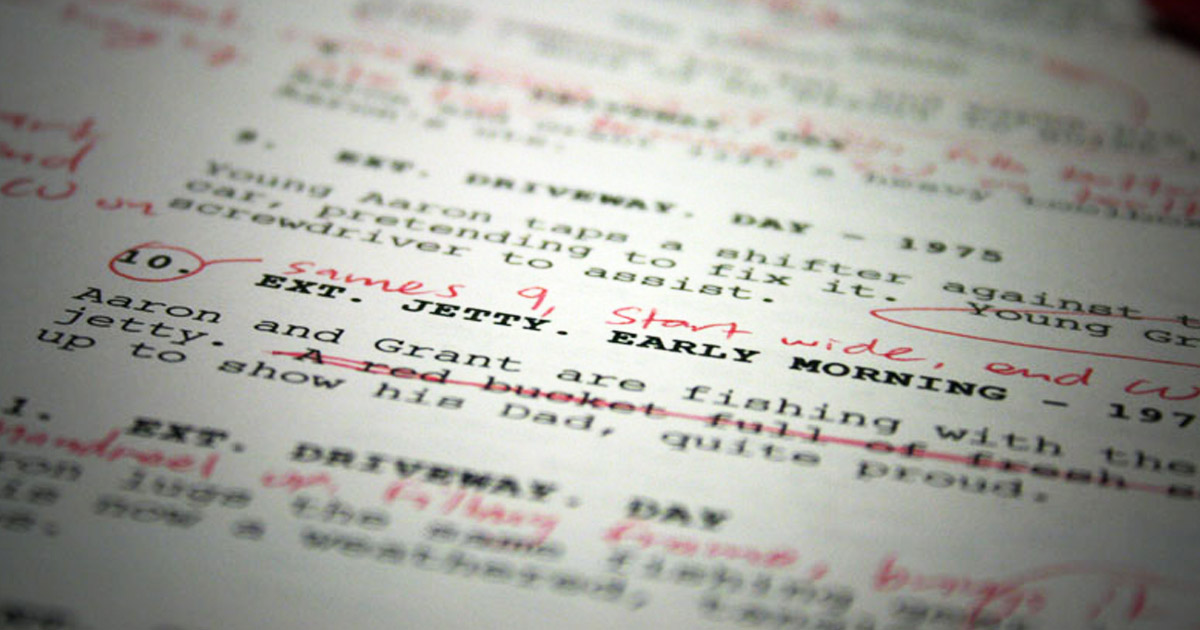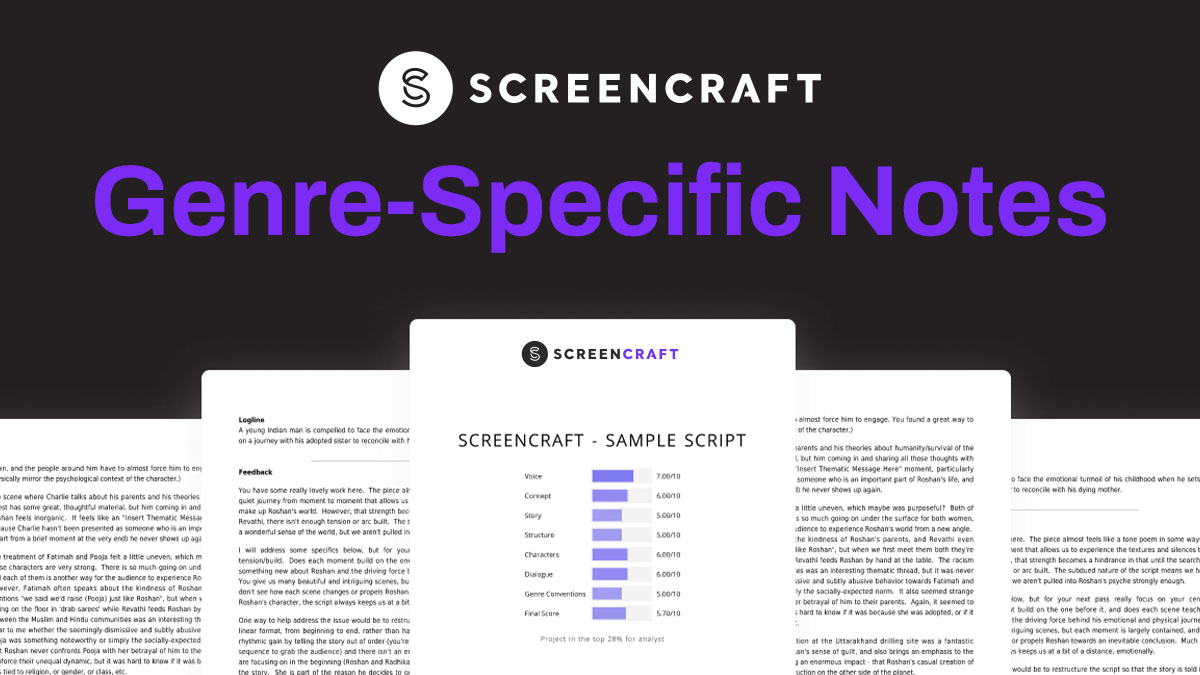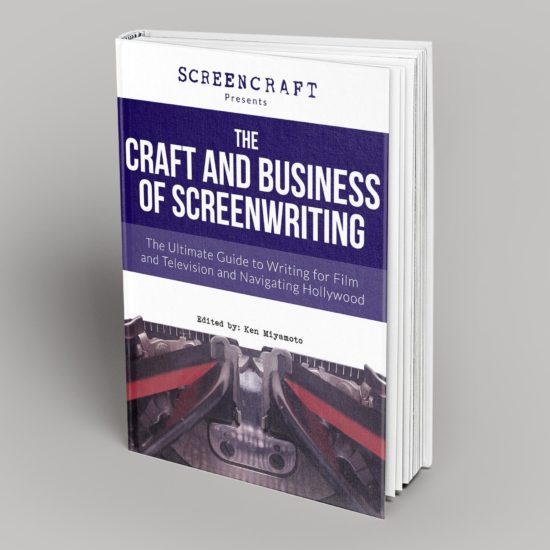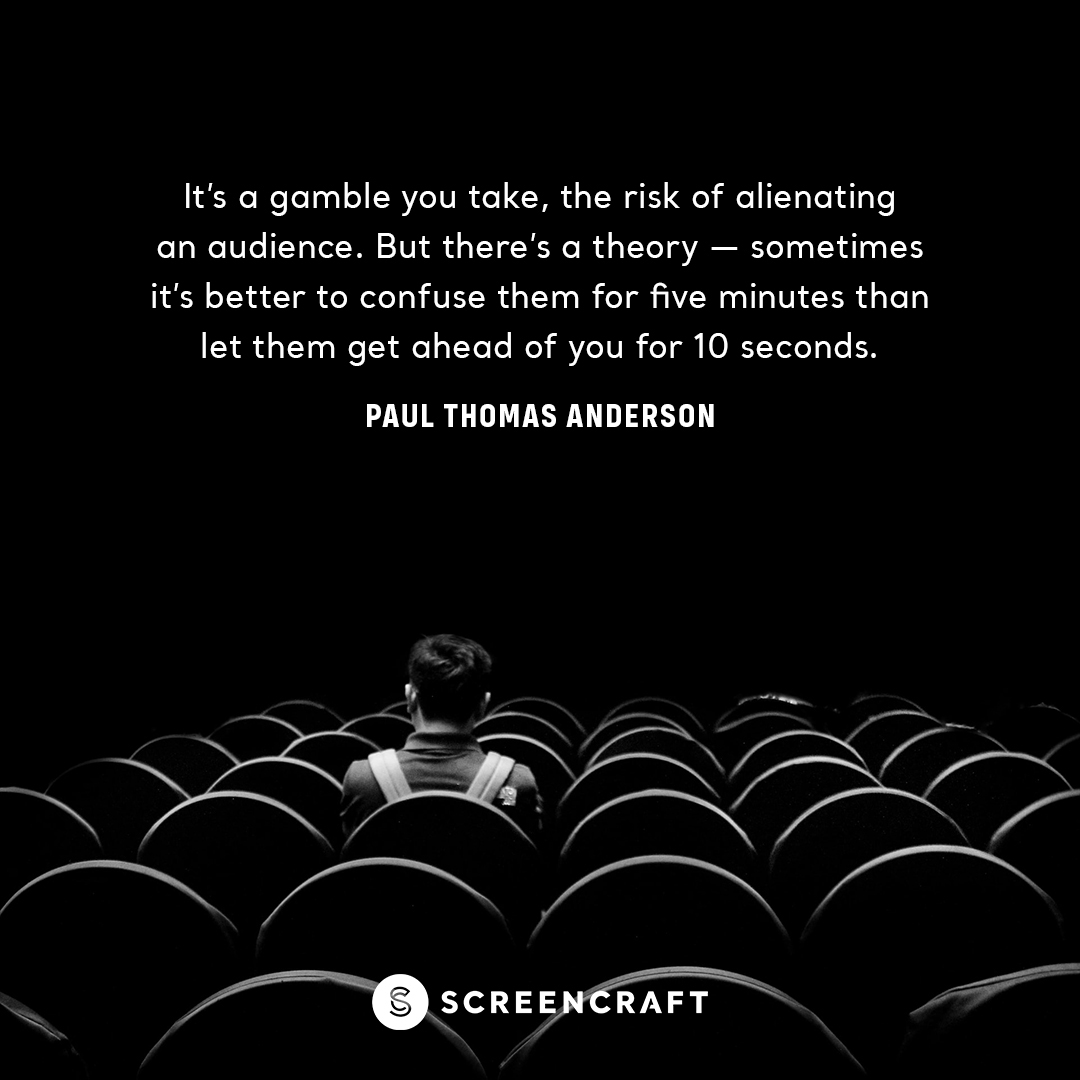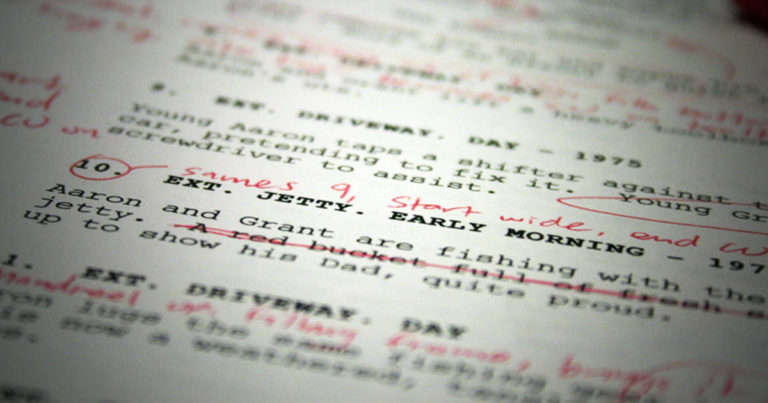
By: Rebecca Norris
Ah, the spec script. The thing you’ve been slaving over for months or years—your calling card—your ticket to breaking in to the biz. When you’re crafting that first spec script, it can be a bit confusing as to what belongs in it and what doesn’t. After all, if you’ve been studying professional, published scripts, chances are that you’ve been reading shooting scripts, which are a different beast than spec scripts. And you may not know that there are things that should never go in a spec script that you’ll likely see in a shooting script.
What is a spec script anyway? A “spec” is a script that’s written on the “speculation” of being sold. The screenwriter isn’t being paid to write it; rather, he or she wants to sell it, option it, and/or submit it to contests, fellowships, production companies, agents, or managers.
When you’re first starting out and building up a portfolio of work, you’ll be filling it up with material you’ve “written on spec.” If you’re a feature writer, you’ll probably have at least 2-3 feature-length screenplays in your repertoire. If you’re a TV writer, you’ll likely need at least one original spec pilot and also a spec of a show that’s currently on the air. These are used to submit to network fellowships and also for consideration for TV staffing season. Many writers these days will have a combination of original pilots, spec teleplays, and spec features in their portfolios so that they’re prepared for any opportunities that might come their way.
Before you submit a spec around town, you want to make sure it looks as polished and professional as possible so you have the best chance of getting it read. So here are 4 things that should never go in a spec script:
#1: Scene Numbers
Scene numbers are assigned when a script goes into production, and shouldn’t appear in a shooting script. If you’re writing in Final Draft (the most commonly used screenwriting software in Hollywood), make sure that the scene numbers are turned off by going to Production > Scene Numbers and unchecking “Number/Renumber.” If you have scene numbers on and you want to remove them, check “Remove Numbers.”
#2: Camera Directions
While you may sometimes see some camera directions in a shooting script, you shouldn’t include them in a spec. After all, the director is the one who’s going to be selecting the shots, not the writer. So you’ll want to generally leave out directions such as PAN RIGHT, TILT UP, and POV.
However, that doesn’t mean you can’t cleverly allude to camera directions without saying them outright. For example, let’s say you’re writing a film about a mountain climber about to embark upon Mount Everest, and you want to indicate that the camera is tilting up the mountain to show its incredible height. Instead of writing “The camera tilts up to show the height of the mountain” you can write a line that involves the character in action, like “Gina stands at the base of Everest, scanning the incredible height of the mountain—so massive that she can only see a portion of it before it disappears into a mass of clouds.”
Here, the writer has inferred that there’s a camera tilt without having to say it, and framed it in the action of the character so it’s more engaging to read.
#3: Cast Lists
A cast list is something you’ll often see in sitcom or half hour TV scripts. It’s a list of all of the characters in the episode and the actors that play them. If an actor hasn’t been cast yet, it’ll usually read “TBD.” Cast lists shouldn’t be included in your spec episode or spec pilot, particularly in a spec pilot, since the roles haven’t been cast!
#4: Prop Lists, Set Lists, and the Like
You’re also likely to encounter other lists in sitcom or half hour scripts. No two shows are the same, but you may see a combination of lists of props, sets, day breakdowns, and/or lists of sound cues and special effects. All of these are for production only and shouldn’t be included in your spec. They only distract from your story and needlessly increase the page count of your document.
It can be challenging to break in to screenwriting, but if you follow these guidelines, you have a much better chance of your script coming across as polished and professional, and serving as a calling card for your screenwriting career!
Rebecca Norris is an award-winning writer, producer, and content creator with her production company Freebird Entertainment. Her web series Split won multiple Outstanding Achievement awards at LA WebFest, was nominated for an Indie Series Award, and was named one of WebVee Guide's Favorite Web Series. Her award-winning debut feature film, Cloudy With a Chance of Sunshine, is currently on the festival circuit and will be distributed on Streaming and DVD in Summer 2017. Follow Rebecca on Twitter at @beckaroohoo.
Tags
Get Our Screenwriting Newsletter!
Get weekly writing inspiration delivered to your inbox - including industry news, popular articles, and more!


